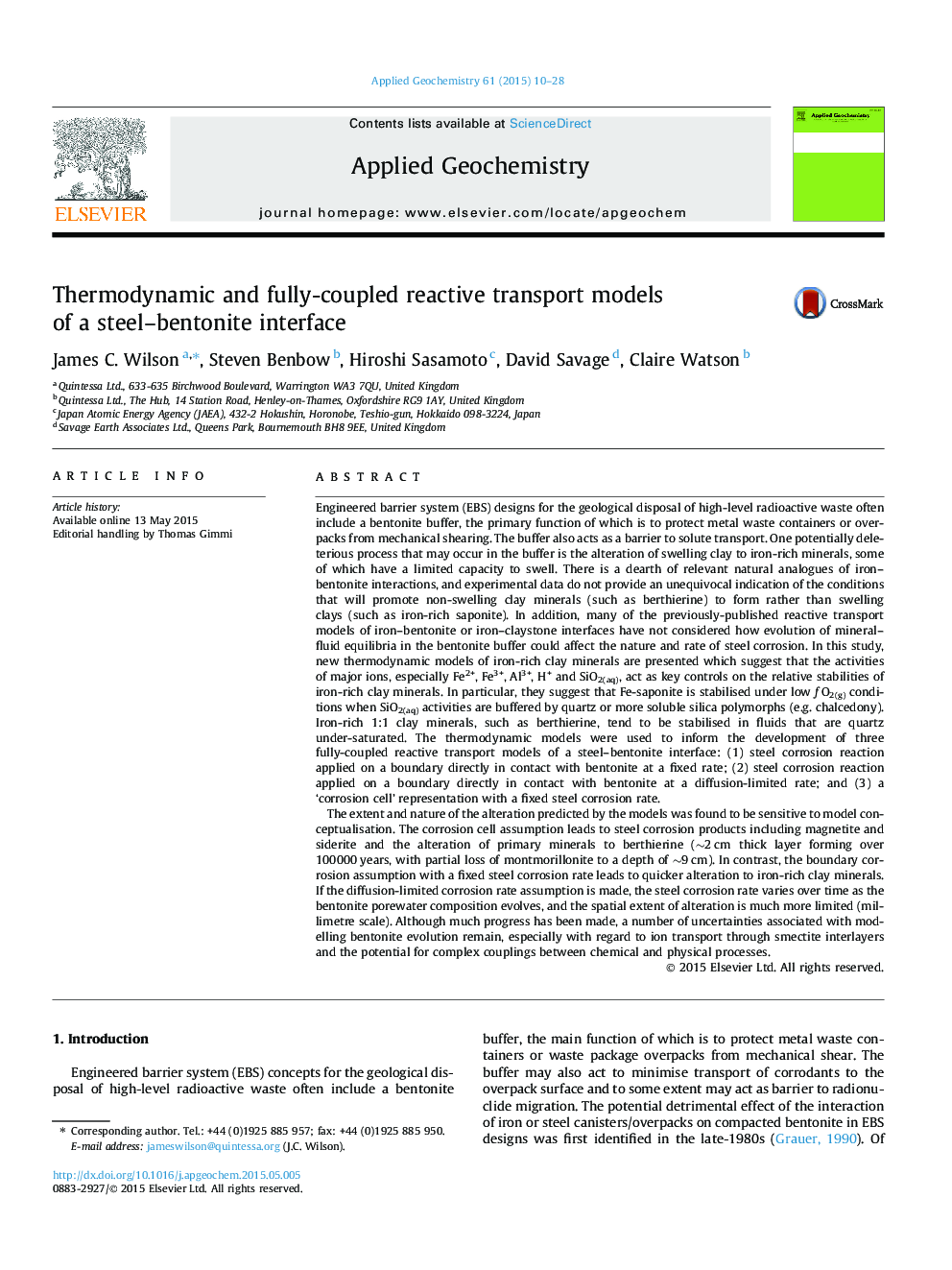| کد مقاله | کد نشریه | سال انتشار | مقاله انگلیسی | نسخه تمام متن |
|---|---|---|---|---|
| 6335001 | 1620230 | 2015 | 19 صفحه PDF | دانلود رایگان |
- Radioactive waste disposal systems often include steel and bentonite.
- Thermodynamic models suggest potential iron-bentonite reaction pathways.
- Dissolved silica activity is an important control on Fe-rich clay mineral stability.
- Reactive-transport models demonstrate complex process couplings.
- Steel corrosion rates may vary as bentonite undergoes alteration.
Engineered barrier system (EBS) designs for the geological disposal of high-level radioactive waste often include a bentonite buffer, the primary function of which is to protect metal waste containers or overpacks from mechanical shearing. The buffer also acts as a barrier to solute transport. One potentially deleterious process that may occur in the buffer is the alteration of swelling clay to iron-rich minerals, some of which have a limited capacity to swell. There is a dearth of relevant natural analogues of iron-bentonite interactions, and experimental data do not provide an unequivocal indication of the conditions that will promote non-swelling clay minerals (such as berthierine) to form rather than swelling clays (such as iron-rich saponite). In addition, many of the previously-published reactive transport models of iron-bentonite or iron-claystone interfaces have not considered how evolution of mineral-fluid equilibria in the bentonite buffer could affect the nature and rate of steel corrosion. In this study, new thermodynamic models of iron-rich clay minerals are presented which suggest that the activities of major ions, especially Fe2+, Fe3+, Al3+, H+ and SiO2(aq), act as key controls on the relative stabilities of iron-rich clay minerals. In particular, they suggest that Fe-saponite is stabilised under low f O2(g) conditions when SiO2(aq) activities are buffered by quartz or more soluble silica polymorphs (e.g. chalcedony). Iron-rich 1:1 clay minerals, such as berthierine, tend to be stabilised in fluids that are quartz under-saturated. The thermodynamic models were used to inform the development of three fully-coupled reactive transport models of a steel-bentonite interface: (1) steel corrosion reaction applied on a boundary directly in contact with bentonite at a fixed rate; (2) steel corrosion reaction applied on a boundary directly in contact with bentonite at a diffusion-limited rate; and (3) a 'corrosion cell' representation with a fixed steel corrosion rate.The extent and nature of the alteration predicted by the models was found to be sensitive to model conceptualisation. The corrosion cell assumption leads to steel corrosion products including magnetite and siderite and the alteration of primary minerals to berthierine (â¼2 cm thick layer forming over 100 000 years, with partial loss of montmorillonite to a depth of â¼9 cm). In contrast, the boundary corrosion assumption with a fixed steel corrosion rate leads to quicker alteration to iron-rich clay minerals. If the diffusion-limited corrosion rate assumption is made, the steel corrosion rate varies over time as the bentonite porewater composition evolves, and the spatial extent of alteration is much more limited (millimetre scale). Although much progress has been made, a number of uncertainties associated with modelling bentonite evolution remain, especially with regard to ion transport through smectite interlayers and the potential for complex couplings between chemical and physical processes.
Journal: Applied Geochemistry - Volume 61, October 2015, Pages 10-28
